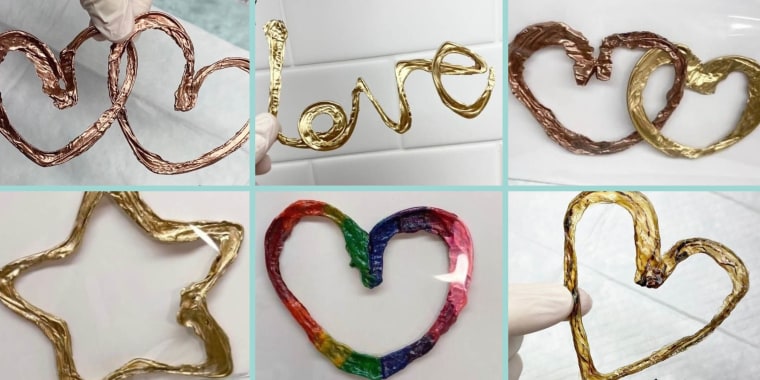For some moms, an umbilical cord is a reminder of their crowning glory — but why are we suddenly seeing preserved placental parts all over social media?
When Megan Kilpatrick, 32, was getting ready to welcome her daughter, she knew she wanted to encapsulate her placenta, a process that includes steaming, dehydrating and grinding the placenta before placing it into pills for ingestion by postpartum moms.
Kilpatrick, a mom of two in Los Angeles, tells TODAY.com it was during this process she learned about umbilical cord keepsakes.
"Having your umbilical cord gold plated was an add-on," she says.
The California-based mom says she was initially caught off guard by the option.
"I had never heard of it, but then I watched videos of the encapsulation and thought, 'For $20 more, why not?'" Kilpatrick says, adding she left the hospital with a cooler to properly preserve her placenta before shipping it to a company for the encapsulation process.
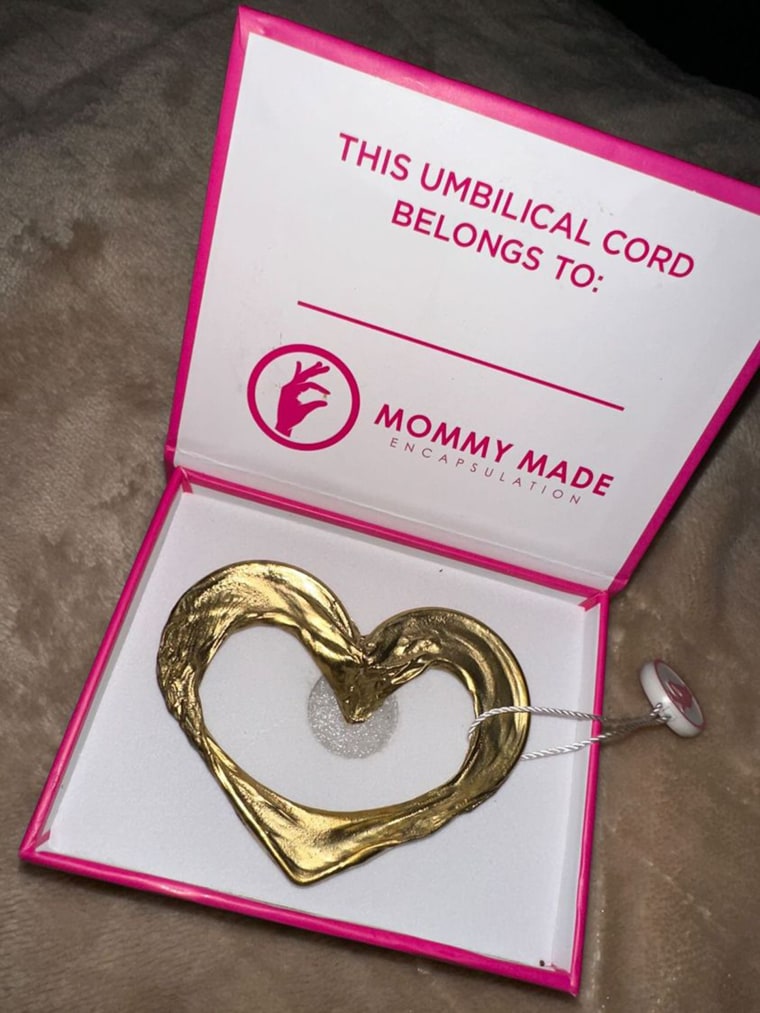
Kilpatrick tells TODAY.com she gifted her daughter's gold, heart-shaped preserved umbilical cord to her husband, Antonio.
"He thought it was a unique gift," she says.
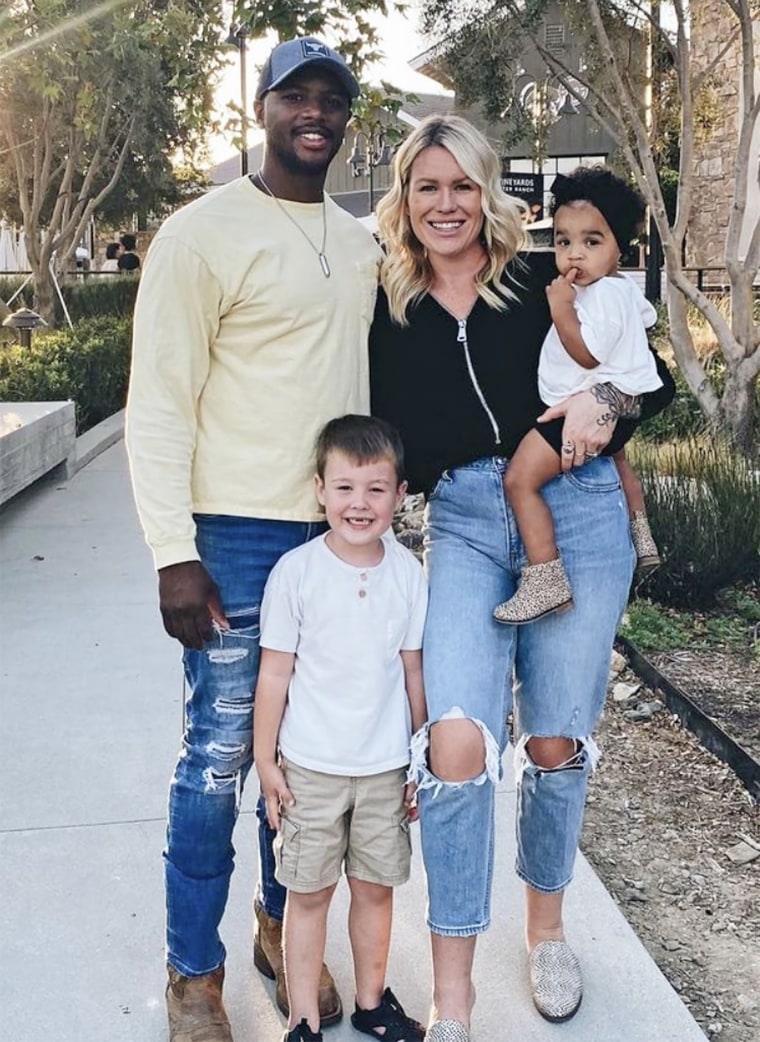
While umbilical cord keepsakes are going viral on social platforms like TikTok, the preservation practice is not new.
Carmen Calvo, 43, of San Antonio, Texas, has been creating keepsakes from umbilical cords as part of placenta encapsulation packages for new parents since 2011.
"I was a new mom suffering from postpartum anxiety when I found out I was pregnant again at five months postpartum," Calvo tells TODAY.com. "I wanted to give myself the best chance of having a peaceful and well postpartum experience the second time around, and began looking into placenta encapsulation. I had nothing to lose and only something to gain, so I decided to try it."
While the CDC cautions against it, citing health concerns for both moms and babies, placenta consumption has become popularized thanks to promotion from celebrities like Kim and Khloe Kardashian, as well as Holly Madison and January Jones.
"There is potential evidence for risk of harm as inadequate heating and preparation of placenta capsules may be insufficient enough to eradicate bacterial and viral infections from being transmitted to the newborn," Dr. Stephanie Liu, assistant professor at University of Alberta, tells TODAY.com.
Calvo tells TODAY.com that umbilical cord keepsakes are a natural byproduct of the encapsulation service and are usually complementary.
"Since the cord comes attached to the placenta, and isn’t included in the placenta capsules, it only makes sense to make something special with it," she says, adding she has had clients make shadow boxes for their nurseries with the sonogram, hospital bracelet, hat and umbilical cord keepsake inside. Others have turned the dried cords into Christmas tree ornaments.
The keepsakes can be made into a variety of shapes.
"With extra long cords, I have been able to spell baby’s name, or the word 'LOVE.' I’ve made hearts, stars and baby initials," Calvo says. "My favorite part of keepsakes is that you can see the umbilical arteries and vein running through the keepsake, like threads."
Board-certified OB-GYN Dr. Christine Noa Sterling tells TODAY.com that the practice is safe.
"Once the placenta is delivered it would not impact the mother — or the baby — if a piece of the umbilical cord was collected for a keepsake," she says.
But Sterling, who is the founder of parenting resource Sterling Parents, says there are some circumstances in which the obstetrician or pediatrician may want the placenta and umbilical cord examined by a pathologist, or doctor who specializes in the examination of tissues to help make a medical diagnosis.
"In these cases the entire placenta and umbilical cord need to be sent to the laboratory for examination," she says. "The parent would have to speak with the laboratory to determine if a piece of the cord could be returned after the examination and testing is complete."
For moms like Brittany Luckowski, having a memento from pregnancy is something she wishes she knew about before giving birth.
"Having the cord that tethered me to my baby would be so special," says the Marlow, Oklahoma, mom who gave birth to daughter, Miriam Sue, nine months ago.
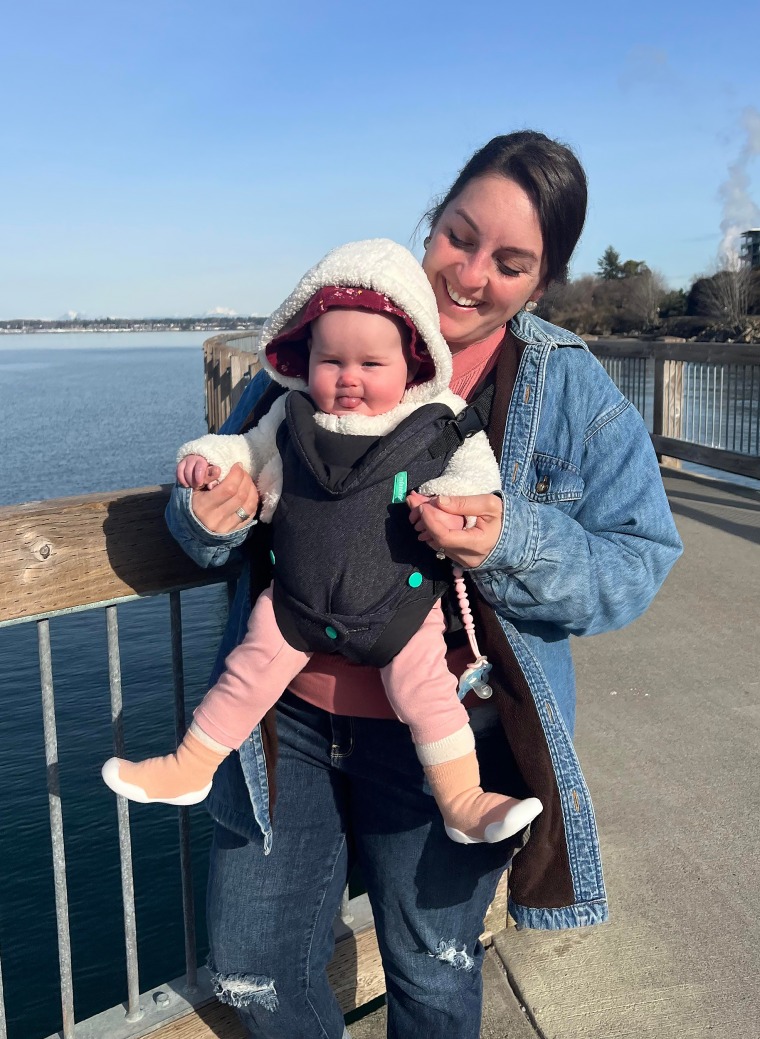
Luckowski tells TODAY.com she is "sad" she didn't know about preserving her daughter's umbilical cord sooner.
"Now that I know that I can, I am going to (do it) with my next child," she says.
Pennsylvania mom Breanna Powderly, 29, didn’t ask for her daughter’s umbilical cord to be saved — but she’s grateful it was preserved.
“I was pleasantly surprised,” Powderly tells TODAY.com. “My doula said I had one of the longest cords she’d ever seen.”
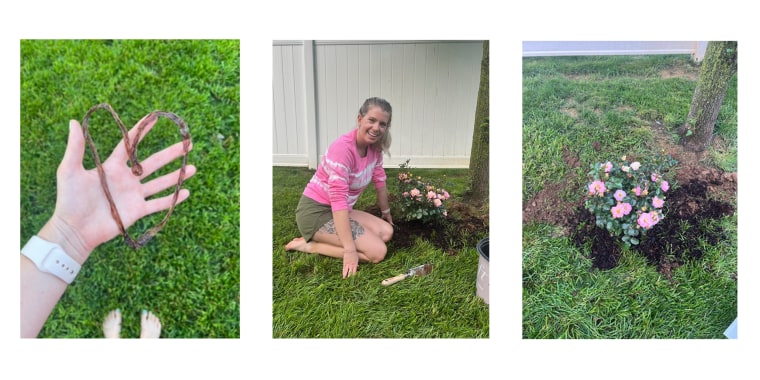
Powderly says she held onto the “sacred” souvenir and buried in her backyard when her daughter turned 1.
“I buried it under a rose bush that I planted in honor of her middle name,” she says of daughter Emilia Rose. “Burying it on her first birthday felt very sacred because the cord is the tether that kept us together when she was in my womb ... it felt like a really special way to honor that connection we had and put it to rest as our connection as mother and baby also grew and developed as she became a toddler and no longer a baby.”
Casey Merrell, 32, began creating artwork from umbilical cords after the birth of her first son.
"I wasn't certified or trained yet — I had barely even heard of it," Merrell says of creating keepsakes from umbilical cords. "I brought my placenta with the umbilical cord home from the hospital, and I created an umbilical cord keepsake."
Since then, Merrell has become certified as a full-time birth worker and placenta specialist and launched her business, uCord Keepsakes.
"I did a full training through Brilliant Birth Academy for a placenta specialist," Merrell says, adding that most of their training is focused on placenta encapsulation, but a small portion focuses on umbilical cords. "Over the years I have taken their small blip of the training and through trial and error and practice, I've turned it into more of an art form."
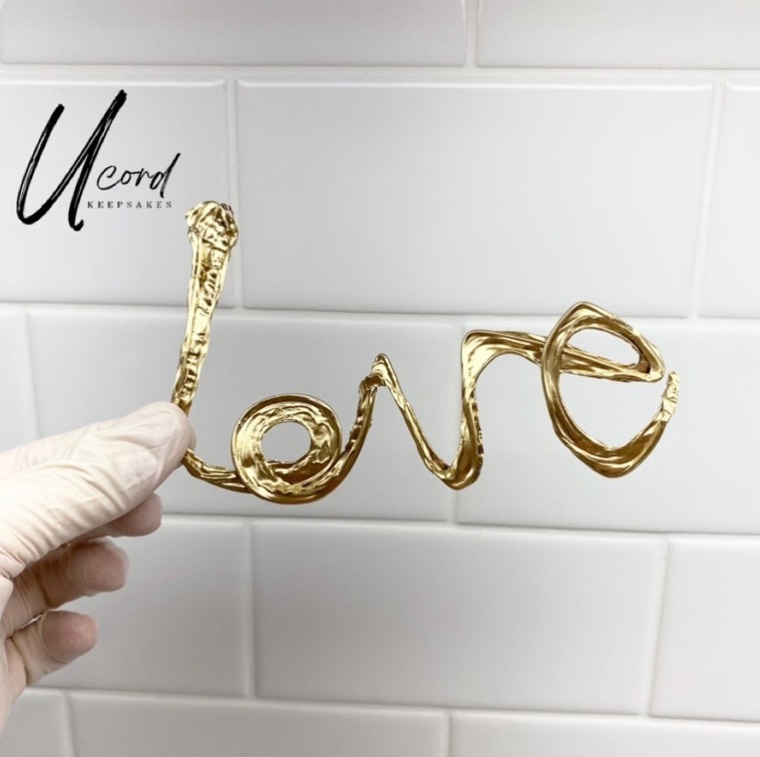
Because of the nature of her work, Merrell also maintains a blood-borne pathogen training certification, as well as a food handler's license.
"It is essentially a biohazard that I'm dealing with," she says.
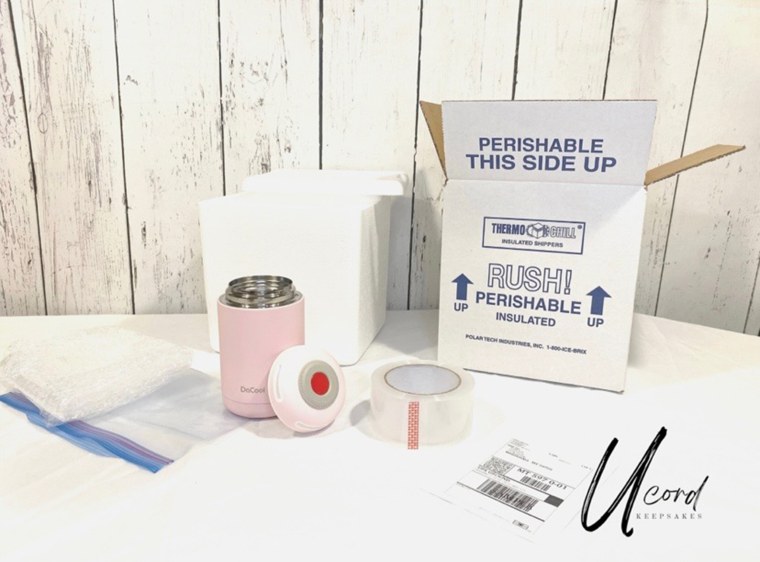
Merrell, who built a processing center for her business in her home in St. Louis, Missouri, provides customers with a prepaid cooler box system and an umbilical cord collection kit for hospital staff.
After her work space is sanitized, Merrell begins the process of cord dehydration to remove all the moisture and works with parents on design.
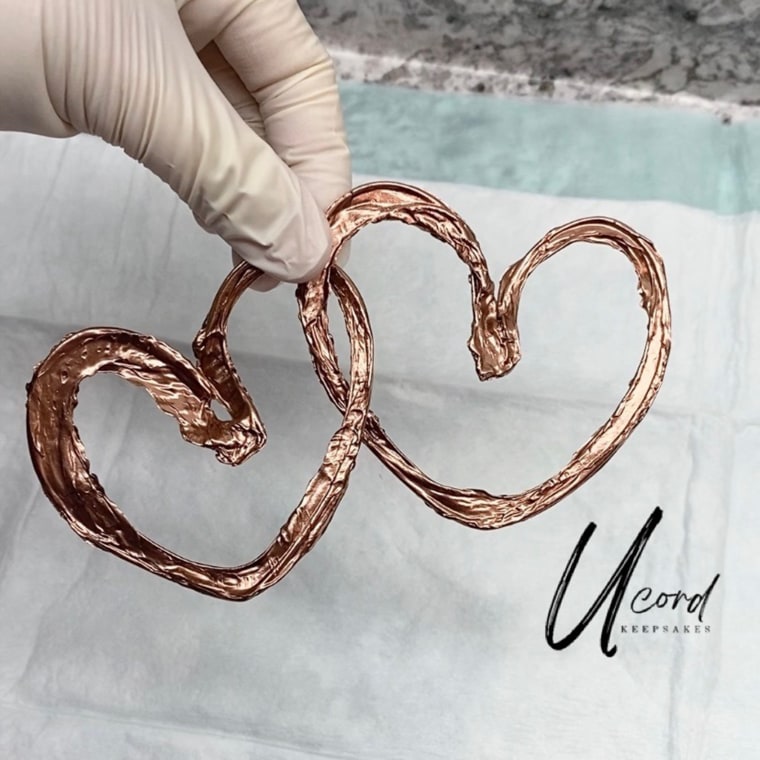
While the mom of four tells TODAY.com that she enjoys creating keepsakes for all parents, there is one specific community that she's especially eager to help: the angel mom community.
"I am honored to create for a lot of babies who don't necessarily go home or don't necessarily live very long, but their moms are able to have this piece of them preserved to have in memory of them or honor of them," she says. "I've actually had a few (scenarios) where the baby passes and I can get their keepsake back before the memorial so they can have it on display."
Sterling says that the tangible nature of umbilical cords can be comforting for those who experience a stillbirth or infant loss.
"Though we often need to examine the placenta and umbilical cord in these cases, we also try to work with the pathology department to accommodate requests for keepsakes," she says. "We know how important they can be to a family that has lost their baby."
Related video:
